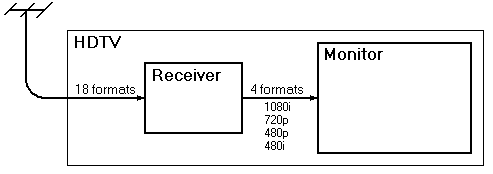Originally posted by Jerry Jones
View Post
Jerry, I am not talking about broadcast, I don't care about it what so ever.
The point I am trying to make is that Blu-Ray now the winner will not go the way of disco as you keep pointing out. Broadcast will have two means to provide content to home viewers...
1) Digital TV, via either Satelite or cable. both supporting up to 720p
2) IP based solutions example IP-TV, again support up to 720P
So either of these delivery methods is ok for TV, they may eventually go 1080i if compression get's better over the years, but people will live with 720p for now and it's fine.
Now... If I want to watch an HD movie, there is no way in hell I am going to either download a movie at 720p from a provider or wait for my TV company to view it at 720p any time soon, if I have the hardware (Blu-ray + 1080P LCD set + kick ass audio surround system) I am going to buy or rent a blu-ray movie and watch it at the best res AND audio quality I can possibly get, you got it...1080p.
1080P is not as you claim, a marketing hype, it's real I have seen it, I have even seen 4Kx2K video from a 4K camera played back on a $20,000 LCD at NAB, and let me tell you that was amazing.
I recommend that everyone who loves movies at the best quality to go and buy 1080P TV's and a Blu Ray player because that's the only way asside from HD-DVD players to get full 1080p.
Blu-ray media will be for people wanting to have a good archive of movies, who like to collect special editions etc. while Apple TV is a good choice for people who want to watch the daily news or the odd movie on TMN, however when it comes time to watch a movie with family and friends, the prefered choice will be Blu-Ray.
Regards,
Elie







Comment